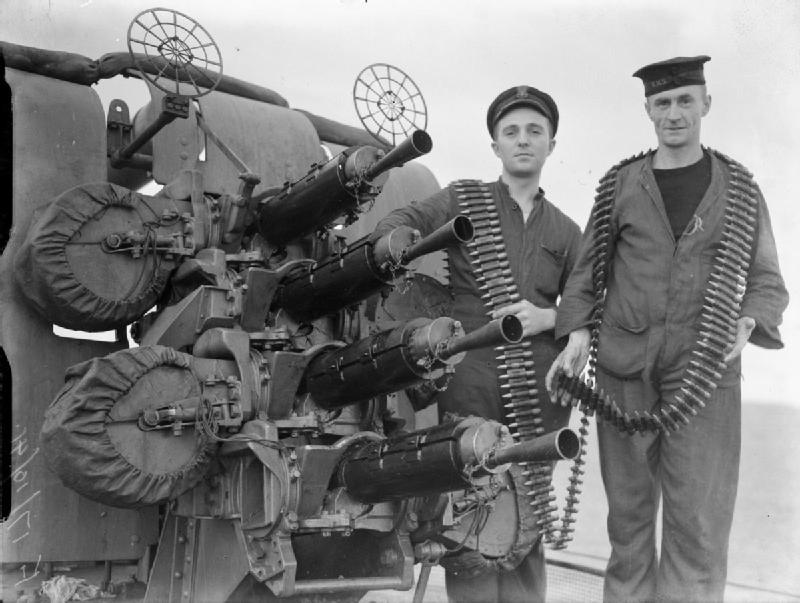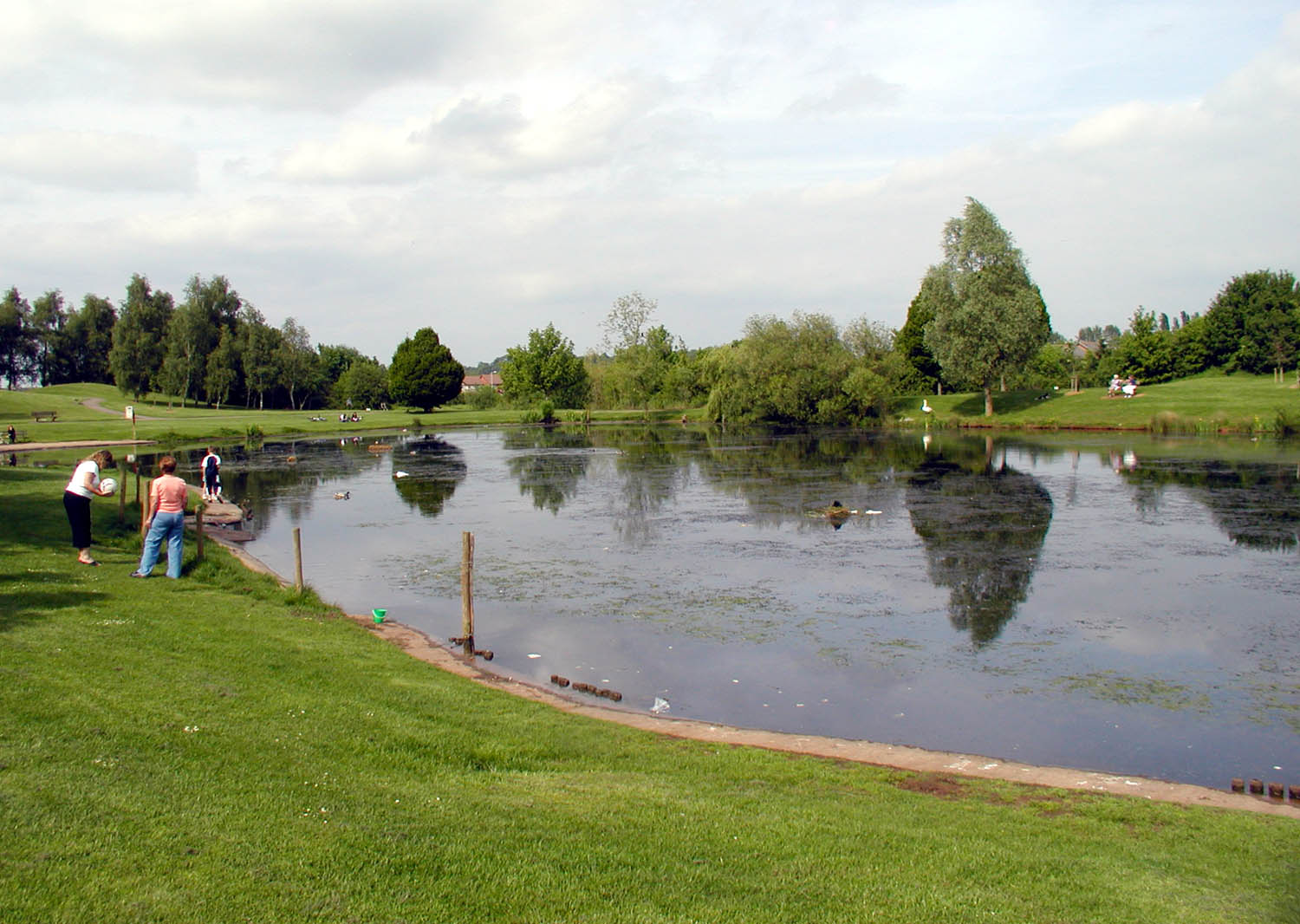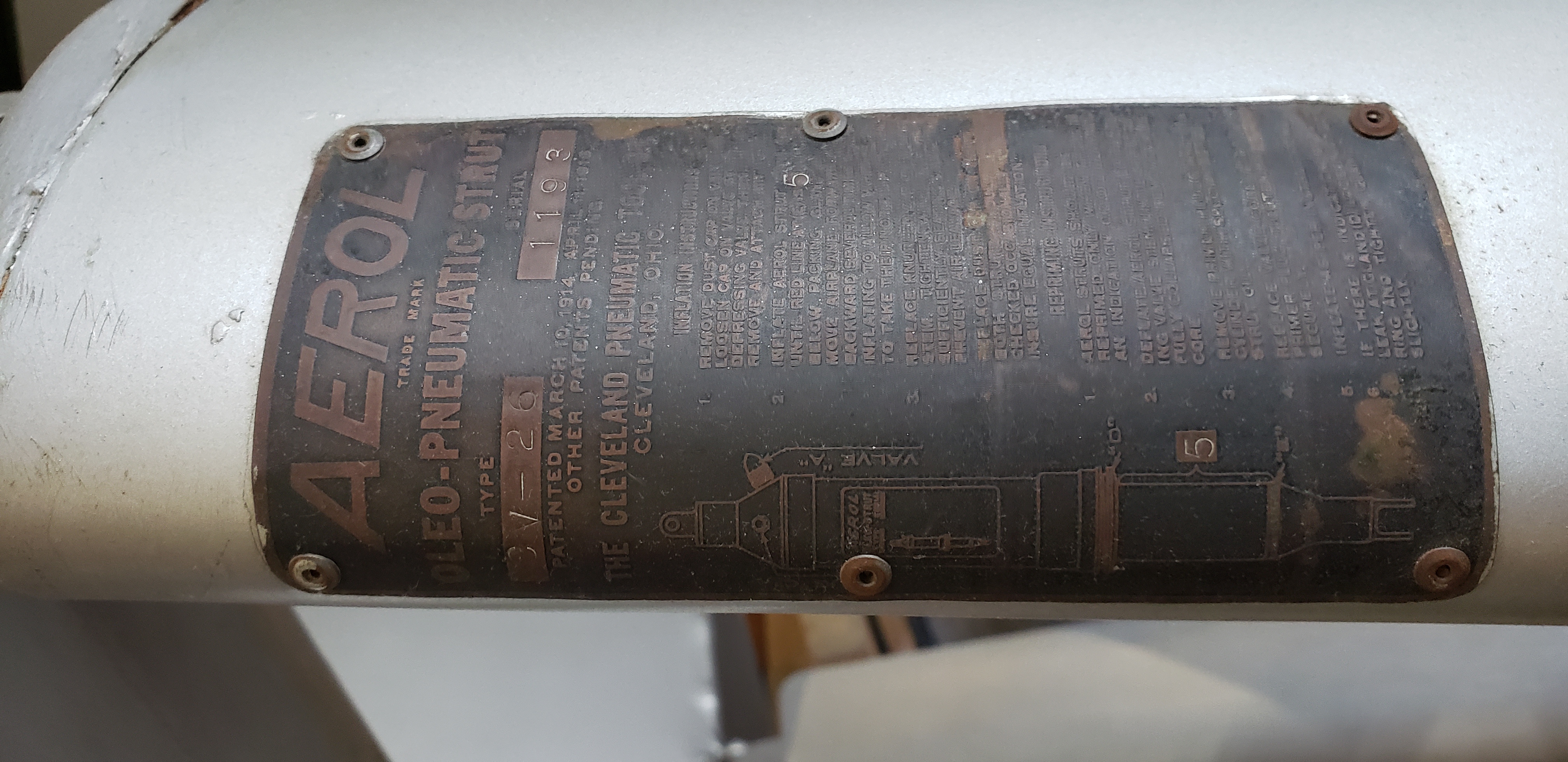|
Parnall Pike
The Parnall Pike was a 2/3-seat biplane reconnaissance aircraft, capable of operating off carrier decks or from water, built to an Air Ministry specification in 1927. Only one was constructed. Design and development The Parnall Pike was submitted by Parnall to Air Ministry specification 1/24, calling for a three-seat reconnaissance aircraft that could operate from carrier decks or from the water, a Fairey IIID replacement. Two companies received orders for two aircraft each, Parnall and Shorts for their Sturgeon, although in the end only one Pike was built. The Pike used mixed construction, but its wings were wooden, fabric covered. They were without sweep and had equal span and constant chord, though the lower wing was noticeably narrower than the upper one. There were ailerons only on the upper wing. The wings together were unusual in having slight backward stagger and in being interconnected as a Warren girder with no bracing wires. Thus, seen from the front the left ha ... [...More Info...] [...Related Items...] OR: [Wikipedia] [Google] [Baidu] |
WikiProject Aircraft
A WikiProject, or Wikiproject, is an affinity group for contributors with shared goals within the Wikimedia movement. WikiProjects are prevalent within the largest wiki, Wikipedia, and exist to varying degrees within Wikimedia project, sibling projects such as Wiktionary, Wikiquote, Wikidata, and Wikisource. They also exist in different languages, and translation of articles is a form of their collaboration. During the COVID-19 pandemic, CBS News noted the role of Wikipedia's WikiProject Medicine in maintaining the accuracy of articles related to the disease. Another WikiProject that has drawn attention is WikiProject Women Scientists, which was profiled by ''Smithsonian Magazine, Smithsonian'' for its efforts to improve coverage of women scientists which the profile noted had "helped increase the number of female scientists on Wikipedia from around 1,600 to over 5,000". On Wikipedia Some Wikipedia WikiProjects are substantial enough to engage in cooperative activities with outsi ... [...More Info...] [...Related Items...] OR: [Wikipedia] [Google] [Baidu] |
Scarff Ring
The Scarff ring was a type of machine gun mounting developed during the First World War by Warrant Officer (Gunner) F. W. Scarff of the Admiralty Air Department for use on two-seater aircraft. The mount incorporated bungee cord suspension in elevation to compensate for the weight of the gun, and allowed an airgunner in an open cockpit to swivel and elevate his weapon (a Lewis machine gun) quickly, and easily fire in any direction. Later models permitted the fitting of two Lewis guns; while this doubled the firepower available, operation of the paired guns was more cumbersome, and required considerable strength from the gunner, especially at altitude, so that many gunners preferred the original single gun - and this became the postwar standard. In either case, the mounting was simple and rugged, and gave its operator an excellent field of fire. It was widely adapted and copied for other airforces. As well as becoming a standard fitting in the British forces during the First Worl ... [...More Info...] [...Related Items...] OR: [Wikipedia] [Google] [Baidu] |
Carrier-based Aircraft
A carrier-based aircraft (also known as carrier-capable aircraft, carrier-borne aircraft, carrier aircraft or aeronaval aircraft) is a naval aircraft designed for operations from aircraft carriers. Carrier-based aircraft must be able to launch in a short distance and be sturdy enough to withstand the abrupt forces of launching from and recovering on a pitching deck. In addition, their wings are generally able to fold up, easing operations in tight quarters. Such aircraft are designed for many purposes including Fighter aircraft, air-to-air combat, Attack aircraft, surface attack, Anti-submarine warfare, anti-submarine warfare (ASW), Search and rescue, search and rescue (SAR), Carrier onboard delivery, transport (COD), Weather reconnaissance, weather observation, Reconnaissance aircraft, reconnaissance and Airborne early warning and control, airborne early warning and control (AEW&C) duties.Fred T Jane (2005). ''Jane's All the World's Aircraft''. Jane's Information Group. The ter ... [...More Info...] [...Related Items...] OR: [Wikipedia] [Google] [Baidu] |
Parnall Aircraft
Parnall was a British aircraft manufacturer that evolved from a wood-working company before the First World War to a significant designer of military and civil aircraft into the 1940s. It was based in the west of England and was originally known as George Parnall & Co. Ltd. History In 1916, the Bristol based Parnall & Sons shopfitters started to manufacture aircraft at the Colliseum Works at Park Row in Bristol. During the First World War, the skilled staff were moved to sites around the city and in neighbouring South Gloucestershire producing planes to their own designs and, under contract, those of other companies. In 1919, the aircraft business was split from the parent company Parnall & Sons as George Parnall and Company. In the 1920s, aircraft manufacture was centralised at a factory in Yate close to an airfield used by the Royal Flying Corps. In the 1930s, gun turrets for bomber aircraft were produced. The site was a strategic target for Luftwaffe bombing and during 19 ... [...More Info...] [...Related Items...] OR: [Wikipedia] [Google] [Baidu] |
1920s British Military Reconnaissance Aircraft
Nineteen or 19 may refer to: * 19 (number) * One of the years 19 BC, AD 19, 1919, 2019 Films * ''19'' (film), a 2001 Japanese film * ''Nineteen'' (1987 film), a 1987 science fiction film * '' 19-Nineteen'', a 2009 South Korean film * '' Diciannove'', a 2024 Italian drama film informally referred to as "Nineteen" in some sources Science * Potassium, an alkali metal * 19 Fortuna, an asteroid Music * 19 (band), a Japanese pop music duo Albums * ''19'' (Adele album), 2008 * ''19'', a 2003 album by Alsou * ''19'', a 2006 album by Evan Yo * ''19'', a 2018 album by MHD * ''19'', one half of the double album '' 63/19'' by Kool A.D. * ''Number Nineteen'', a 1971 album by American jazz pianist Mal Waldron * ''XIX'' (EP), a 2019 EP by 1the9 Songs * "19" (song), a 1985 song by British musician Paul Hardcastle * "Stone in Focus", officially "#19", a composition by Aphex Twin * "Nineteen", a song from the 1992 album ''Refugee'' by Bad4Good * "Nineteen", a song from the ... [...More Info...] [...Related Items...] OR: [Wikipedia] [Google] [Baidu] |
Vickers Machine Gun
The Vickers machine gun or Vickers gun is a Water cooling, water-cooled .303 British (7.7 mm) machine gun produced by Vickers Limited, originally for the British Army. The gun was operated by a three-man crew but typically required more men to move and operate it: one fired, one fed the ammunition, the others helped to carry the weapon, its ammunition, and spare parts. It was in service from before the First World War until the 1960s, with air-cooled versions of it on many Allies of World War I, Allied World War I Aviation in World War I, fighter aircraft. The weapon had a reputation for great solidity and reliability. Ian V. Hogg, in ''Weapons & War Machines'', describes an action that took place in August 1916, during which the British 100th Company of the Machine Gun Corps fired their ten Vickers guns to deliver sustained fire for twelve hours. Using 100 barrels, they fired a million rounds without breakdowns. "It was this absolute foolproof reliability which endear ... [...More Info...] [...Related Items...] OR: [Wikipedia] [Google] [Baidu] |
Felixstowe
Felixstowe ( ) is a port town and civil parish in the East Suffolk District, East Suffolk district, in the county of Suffolk, England. The estimated population in 2017 was 24,521. The Port of Felixstowe is the largest Containerization, container port in the United Kingdom. Felixstowe is approximately northeast of London. History There are competing theories as to how the name of Felixstowe arose. One is that the town is named after Felix of Burgundy, a saint and the first bishop of the East Angles in the seventh century, although this is unlikely as the name Felixstowe is not recorded for almost 900 years. An alternative etymology is from the Anglo-Saxon or Old English name "Filicia" and "stōw", meaning a place of location. Literally Filicia's place. The earliest recorded names "Filchestou" from 1254, and "Filchestowe" in 1291 support this idea. It is possible that the later reworking of Filicia/Filche was made with the intention of referencing Felix of Burgundy. The old Feli ... [...More Info...] [...Related Items...] OR: [Wikipedia] [Google] [Baidu] |
Marine Aircraft Experimental Establishment
The Marine Aircraft Experimental Establishment (MAEE) was a British military research and test organisation. It was originally formed as the Marine Aircraft Experimental Station in October 1918 at RAF Isle of Grain, a former Royal Naval Air Service seaplane base, to design, test and evaluate seaplanes, flying boats and other aircraft with a naval connection. It was renamed as the Marine and Armament Experimental Establishment on 16 March 1920 to recognise that weapons and other equipment were evaluated as well as complete aircraft. It was renamed again on 1 March 1924 as the Marine Aircraft Experimental Establishment. Relocations On 16 June 1924 the Establishment moved to the site of the former Seaplane Experimental Station seaplane base at Felixstowe. It carried out research and development work on water-based aircraft for service needs and also on their equipment and on air-sea rescue apparatus. The Establishment's work grew during its early years and by 1930 it was carrying ... [...More Info...] [...Related Items...] OR: [Wikipedia] [Google] [Baidu] |
Yate
Yate is a town and civil parish in South Gloucestershire, England. It lies just to the southwest of the Cotswolds, Cotswold Hills and is northeast of Bristol and from Bath, Somerset, Bath. Developing from a small village into a town from the 1950s onwards, the 2021 UK census, census listed Yate's parish population as 23,703. The market town of Chipping Sodbury (population 5,045) is contiguous with Yate to the east. In addition, a large southern section of the built-up area spills over into the parish of Dodington, Gloucestershire, Dodington (population 8,206), and as a result, the total population of Yate's urban area is estimated at 35,000. Location Yate is located to the northeast of Bristol, which is away by road. Yate is surrounded by a vast amount of countryside and is situated to the south-west of the Cotswolds. The A432 road, A432 is the main road through Yate and runs through the centre of the town. History The first mention of Yate is the existence of a religiou ... [...More Info...] [...Related Items...] OR: [Wikipedia] [Google] [Baidu] |
Oleo Strut
An oleo strut is a pneumatic air–oil hydraulic shock absorber used on the landing gear of most large aircraft and many smaller ones. This design cushions the impacts of landing and damps out vertical oscillations. It is undesirable for an airplane to bounce on landing as it could lead to a loss of control, and the landing gear should not add to this tendency. A steel coil spring stores impact energy from landing and then releases it, while an oleo strut instead absorbs this energy, reducing bounce. As the strut compresses, the spring rate increases dramatically because the air is being compressed. The viscosity of the oil damps the rebound movement. History The original design for the oleo-pneumatic shock-absorbing strut was patented by British manufacturing conglomerate Vickers Armstrong during 1915. It had been derived from the recuperative gear design of the Vickers gun, controlling recoil by forcing oil through precisely sized orifices. Vickers' oleo strut was first applie ... [...More Info...] [...Related Items...] OR: [Wikipedia] [Google] [Baidu] |
Napier Lion
The Napier Lion is a 12-cylinder, petrol-fueled 'broad arrow' W12 engine, W12 configuration aircraft engine built by D. Napier & Son from 1917 until the 1930s. A number of advanced features made it the most powerful engine of its day and kept it in production long after other contemporary designs had been superseded. It is particularly well known for its use in a number of racing designs, for aircraft, boats and cars. Design and development Early in the First World War, Napier were contracted to build aero engines to designs from other companies, initially a Royal Aircraft Establishment, Royal Aircraft Factory model and then Sunbeam Motor Car Company#Sunbeam-Coatalen engines, Sunbeams. Both engines proved to be unreliable and in 1916 Napier decided to design an engine with high power, light weight and low frontal area. Napier's engineers laid out the engine with its 12 cylinders in what they called a Broad arrow#In characterisation of internal combustion engines, "broad arrow ... [...More Info...] [...Related Items...] OR: [Wikipedia] [Google] [Baidu] |







